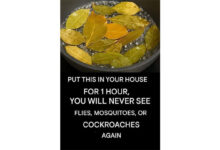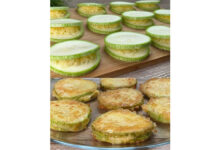HOW TO WASH A PILLOW: 3 tricks to make it as WHITE as new
It is normal for your duvets and pillows to yellow over time. Dust mites and sweat, for example, can have an impact on the quality of your bedding over time. Fortunately, with the appropriate techniques, yellowed pillows can be turned white.
Pillows, like other bedding, should be washed on a regular basis. In fact, it is critical to disinfect them and eliminate any yellowish stains that may have formed there. Furthermore, pillows can quickly become breeding grounds for dust mites, viruses, and bacteria. These arise from a variety of sources, including sweat and dirt particles that accumulate over time.

Despite the yellowish stains and aromas that may arise from your pillows, it is not always necessary to discard them. This is especially true if they are of good quality and haven’t exhausted their two-year lifespan. Instead of taking such drastic measures, focus on low-cost cleaning tips to keep them in good condition. Here are some techniques you can use once a month to properly treat them. This also includes cushions and pillows.
What generates the yellow pillows? As you may expect, perspiration remains the primary and most prevalent cause. And for good reason: this causes your pillow to progressively and irreversibly turn yellow every night. Body sweat enters the pillow fibers and eventually appears on the surface. However, while perspiration is still the most common cause, other substances, such as saliva, can also contribute.
The fluids we secrete cause the cushion that absorbs them to turn yellow. Furthermore, this discoloration is more than simply an aesthetic worry; it indicates that bacteria and mites have collected in the fiber’s core. And it’s normal, because these organisms flourish in damp environments, which can lead to illnesses such as asthma, allergies, and hay fever.
Here are three efficient ways to cleanse your yellowed pillows: 1. Hot water with lemon Lemon is an excellent and highly effective ally if you want to revitalize your pillows and get a good night’s sleep while remaining comfortable. The following tip will allow you to benefit from the whitening and disinfectant characteristics of citrus fruits.
Begin by boiling 2.5 liters of water and then adding 6 glasses of lemon juice. Then, immerse the pillow in the lemon water for around 2 hours. Simply wash the pillow with soapy water to remove stains before washing and drying it. Feel free to add extra water until the pillow is fully submerged in the solution.
2. Combine white vinegar and baking soda. Baking soda and white vinegar are an excellent combination for naturally lightening and softening your pillow’s textile fibers. In reality, the antibacterial and bleaching properties of these two components will eliminate any filth, sweat, and stains from your pillow. This will also assist to eliminate any unpleasant scents that may have developed.

Using them correctly is quite straightforward. Place your pillow in a container filled with hot water, then add half a cup of white vinegar mixed with the same amount of baking soda. Let it soak for an hour. Then, select a standard wash cycle and run it through the washing machine, followed by air drying. Baking soda can also be used to clean a mattress.
3. Lemon & Hydrogen Peroxide This stain-fighting and dust-mite remedy, which uses lemon juice and hydrogen peroxide to whiten garments, is an excellent replacement for bleach. These substances contain active compounds that can effectively erase sweat or saliva stains.
To get its benefits, mix a bucket of hot water with half a cup of lemon juice and twice as much hydrogen peroxide. Place the pillow in the bucket and let it to sit for an hour. After this time, run a regular cycle in your washing machine to rinse the cushion and then dry it in the sun.

